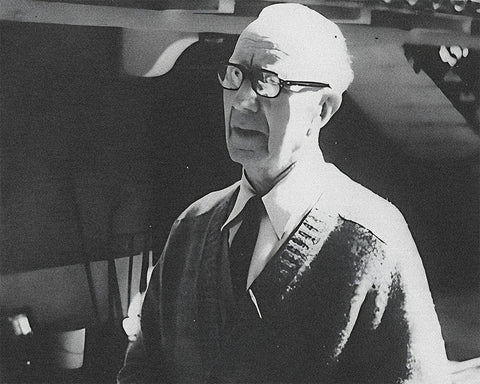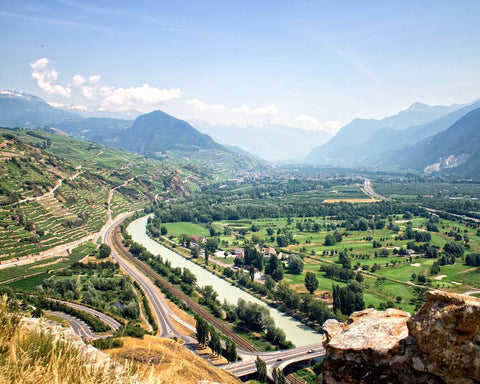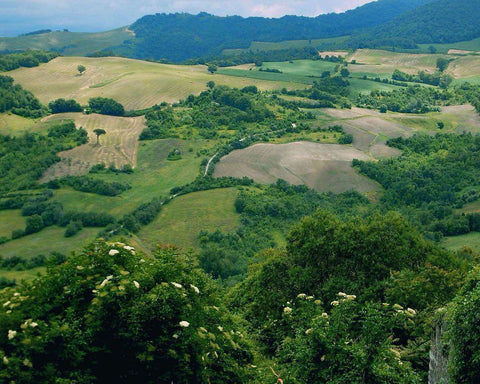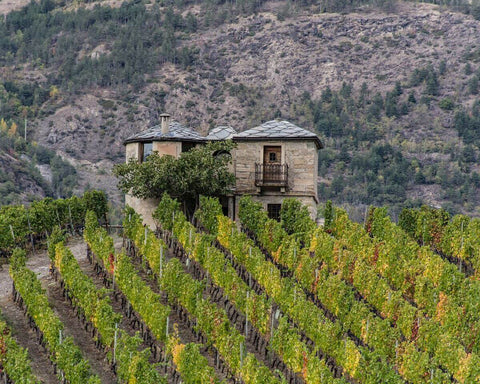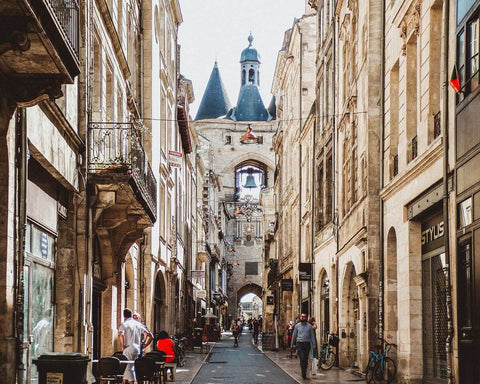The Renaissance of a Fourteenth-Generation Vigneron
In the rolling green hills of the Jura, where vineyards cling to mountainous slopes between Burgundy and Switzerland, Jean-François Ganevat has emerged as one of France's most influential natural winemakers. Representing the 14th generation of vignerons in his family from Rotalier in the south of Jura, Ganevat has transformed a centuries-old estate into a beacon of biodynamic viticulture and minimal intervention winemaking.
The story of Domaine Ganevat stretches back to 1650, when the family first began cultivating vines in the small hamlet of La Combe de Rotalier. For over three centuries, the Ganevat family supplemented their grape-growing with a dairy operation that produced milk destined for the local Comté cheese, maintaining this dual agricultural heritage until 1976. It was then that the family decided to focus exclusively on viticulture, setting the stage for Jean-François to eventually revolutionize their approach to winemaking.
From Burgundy Back to the Jura: A Winemaker's Journey
Jean-François Ganevat's path to becoming one of the Jura's most celebrated vignerons took an important detour through Burgundy. After years working as the cellar master of Jean-Marc Morey in Chassagne-Montrachet, he took over his family's estate in 1998. This apprenticeship in one of Burgundy's most prestigious domaines proved formative, as Ganevat absorbed the Burgundian philosophy of terroir expression and meticulous cellar work.
Jean-François learned at his father's side from 1982 until 1989 before departing for his Burgundian education. During his time away, he developed the technical expertise and philosophical approach that would later define his revolutionary work in the Jura. Many consider him "the most Burgundian of Jurassien vignerons," bringing back not just technical knowledge but a profound understanding of how to express terroir through minimal intervention.
The Philosophy of Natural Winemaking
Upon returning to Rotalier in 1998, Ganevat immediately began transforming the family estate. Ganevat converted the estate to organic viticulture the same year, and then to biodynamics in 2006. This progression represented more than just a change in farming methods; it reflected a fundamental philosophy about the relationship between vine, soil, and wine.
In 2006, Ganevat made the radical decision to completely eliminate the use of sulfur during vinification, with only minuscule amounts added to some white wines at bottling. The wines undergo an extended period on lees and Ganevat believes this provides sufficient protection for the wines, resulting in sulfur dioxide used in minuscule quantities for the white wines only and not at all for the reds.
His approach to winemaking is characterized by extraordinary attention to detail. What other grower destems individual grapes by hand with scissors, to make certain that each berry is intact? This level of meticulousness extends throughout the winemaking process, from vineyard to bottle.
The Terroir of La Combe de Rotalier
The geographic setting of Domaine Ganevat plays a crucial role in the character of its wines. Located in the charming hamlet of La Combe de Rotalier, just south of Lons-le-Saunier, the estate sits in a cooler climate where vineyards are planted on slopes at varying altitudes and gradients.
The domaine is situated in the Pays de Lons, Bresse, Vignoble et Revermont region, between 200m and 500m altitude, an area characterized by hillsides, ponds, and the typical reculées (blind valleys) of the Jura. The soils present a complex patchwork of terroirs, with argiles (clays), schists, and marnes (marls) creating diverse growing conditions across the estate's various parcels.
The largest terroir is Les Chalasses (4 hectares), followed by Les Grandes Teppes (2 hectares) and Grusse en Billat (1.8 hectares), a terroir characterized by its schist soils. Each of these sites brings its own unique characteristics to the wines, with the schist soils of Grusse en Billat contributing minerality and precision, while the blue marls of Les Chalasses create wines of exceptional depth and complexity.
A Diversity of Grape Varieties
One of the most remarkable aspects of Domaine Ganevat is the sheer diversity of grape varieties cultivated on the estate. Despite having only eight and a half hectares under vine, the family has seventeen different local varieties planted of both red and white grapes—an incredible amount of variation for holdings of such small size.
Beyond the classic Jura varieties like Chardonnay, Savagnin, Pinot Noir, Trousseau, and Poulsard, Ganevat has preserved numerous forgotten indigenous varieties. These include outlawed varieties such as Petit Béclan, Gros Béclan, Gueuche, Seyve-Villard, Corbeau, Portugais Bleu, Enfariné, Argant, and Poulsard Blanc. With 25 different grape varieties cultivated across 9 hectares, including vines that are 80 years old for Savagnin and some that are centenarian.
The Art of Single-Parcel Winemaking
Jean-François practices single-parcel selection, that is to say, one soil type, one grape variety = one cuvée. This Burgundian-inspired approach results in an extraordinary range of wines each vintage. As a result, the estate produces 45 different cuvées every year.
Who else farms forty distinct plots spread over only 8.5 hectares and then vinifies them separately, giving each their own highly individualized élevage? This commitment to expressing each terroir individually has resulted in some of the Jura's most sought-after wines.
Iconic Cuvées and Their Stories
Among Ganevat's most celebrated wines, several stand out for their exceptional quality and unique character. The cuvée "Les Chalasses Vieilles Vignes de 1902" vintage 2011 was elected wine of the year in 2014 by the respected guide Bettane et Desseauve. These vines were planted in 1912 and produce wines with a salty, mineral edge and lovely acid balance.
The Grusse en Billat cuvée takes its name from its location in the commune of Grusse and the lieu-dit En Billat. This parcel is composed of schist and white earth soils with a southeast exposure, resulting in a wine of great depth and vibrating minerality.
Les Chalasses Marnes Bleues showcases Savagnin grown on slopes of blue marl soils, producing full-bodied wines with freshness and acidity, powerful but layered. Les Vignes de Mon Père, a Savagnin aged for nearly 10 years, represents one of the domaine's most legendary cuvées, regularly selling for €300 regardless of vintage.
The Winemaking Process
Ganevat's approach to winemaking combines traditional Jura techniques with innovations inspired by his Burgundian training. Fermentations are long, with indigenous yeasts in old demi-muids. Aging is for two or more years in the same casks for his Chardonnay and native Savagnin whites.
Unlike many others in the Jura, he keeps the barrels for most of his white cuvées carefully topped up to avoid oxidation, as he believes that gives the purest expression of his numerous terroirs. This ouillage technique, borrowed from Burgundy, represents a departure from the traditional Jura practice of allowing wines to develop under a veil of yeast.
For the reds, from Pinot Noir and the indigenous Trousseau and Poulsard, Jean-François destems completely, then ferments the whole berries à l'ancienne—utilizing carbonic maceration as in Beaujolais—and then aging in neutral barrels. Since 2014, he has also been experimenting with unlined clay amphorae for aging certain cuvées.
The Négoce Operation
In response to challenging vintages and to support the family during difficult years, In 2013, he launched his négoce label, "Anne et Jean-François Ganevat" (Anne is his sister, who makes the wines with him), due to devastating losses from frost. The 2017 vintage was particularly catastrophic, with 95% of the vines lost to frost that struck on three consecutive nights in April.
Instead of being called Domaine Ganevat, the négoce wines are labelled as Anne and Jean-François Ganevat, and feature different labels. Under his négoce label he now works with everything from Syrah from the Rhône to Riesling from Alsace, sometimes as single vineyard wines, sometimes as cross-appellation blends.
Recognition and Influence
Jean-François Ganevat's impact on the wine world extends far beyond the Jura. He is THE master of natural wine vinification, the benchmark for an entire generation of young vignerons. In 2018, Jean-François Ganevat was named "winegrower of the year 2018" by La Revue des Vins de France.
Many other popular winemakers have studied under Ganevat, including Katie Worobeck, Nicolas Jacob and Alexandre Plassat. His influence has helped establish the Jura as one of the world's most exciting wine regions, with his natural winemaking philosophy inspiring producers globally.
Through the diversity, originality and sheer brilliance of his wines, he's drawn comparison to the likes of Coche, Jayer and Dagueneau as a producer whose wines transcend their appellations.
The Personal Touch
Beyond his technical prowess, Ganevat is known for his philosophical approach to wine. He says of his winemaking, "I love moving forward always considering what I do and seeing how to better myself, it isn't about money, it's a passion." This passion is evident in every aspect of the domaine's operation.
The estate employs one person per hectare to ensure the labor-intensive biodynamic farming is carried out meticulously. Jean-François creates a stunning number of cuvées from both estate fruit and purchased grapes, ranging between thirty-five and forty every year!
Market Recognition and Collectibility
Ganevat's wines have achieved cult status in the natural wine world, with prices reflecting their scarcity and quality. These are among the most expensive wines of the Jura, second only to Pierre Overnoy, and prices continue to increase due to extreme scarcity. Due to their limited production and high demand, Jean-François Ganevat wines can be hard to find. They are very popular with wine lovers, natural wine enthusiasts, and collectors.
The combination of tiny production volumes, extraordinary quality, and international acclaim has made Ganevat's wines some of the most sought-after in the wine world. Whether domain bottlings or négoce cuvées, each wine represents a unique expression of terroir filtered through the vision of one of France's most talented vignerons.
Legacy and Future
As the fourteenth generation of his family to work these lands, Jean-François Ganevat has not merely maintained a tradition but revolutionized it. By combining ancestral knowledge with modern biodynamic practices, Burgundian precision with Jurassien soul, and unwavering commitment to natural winemaking, he has created a body of work that stands as a testament to what is possible when passion, terroir, and technique align perfectly.
The small hamlet of La Combe de Rotalier has become a pilgrimage site for wine lovers from around the world, drawn by the opportunity to taste wines that represent both the deep history of the Jura and its exciting future. In Jean-François Ganevat, the wine world has found not just a winemaker, but a philosopher, an artist, and a guardian of both tradition and innovation.
